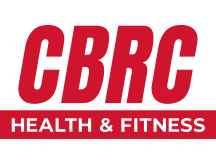Easter is less than a week away.
After the egg hunts and church services will come the much-anticipated Easter dinner.
This is a great opportunity to gorge yourself on ham or turkey and dinner rolls and undo all the great progress you’ve made in your health since the beginning of the year.
Of course, it’s also an opportunity to enjoy yourself with your family, eat a good meal, and maintain the great progress you’ve made in your health since the beginning of the year.
We wrote about some healthy eating tips before Thanksgiving. If you missed it, you can catch up on it here.
Now, let’s turn to how to have a healthy Easter.
There are two things we are going to focus on today: eating seasonally, and portion control.
What does it mean to eat seasonally? Well, it means to eat the food that is in season. Seems simple enough, right? So, let me ask you a question.
What’s in season right now?
With our modern agricultural methods, we’re able to get almost any produce at the supermarket, any time of year.
But it wasn’t always that way.
You see, nature has its way of taking care of us.
In the summer, when it’s hot out, the food that comes in season are the cooling foods, with lots of water in them. Foods like watermelon and zucchini.
In the fall and winter, before anyone had heat pumps or furnaces, people needed to pack on a few pounds of fat, to stay warm. So, the foods that are in season are things like root vegetables. They have a high calorie density and go great in soups and stews.
But in the spring time, you don’t need those extra pounds anymore, so there are much lighter foods available, to help you shed the pounds and detox. Leafy greens, such as dandelions, arugula, kale and lettuce support your liver function to help detox after a long winter. Carrots are also in season.
So be sure to have a great salad with you Easter meal (but don’t over do it on the dressing).
The most important thing for healthy eating, though, is portion control.
You can eat almost anything you want, if you don’t eat too much.
How do you keep from putting too much on your plate at Easter?
- Use a smaller plate. Research shows that the bigger plate and bowl you use, the more you will eat. Even if you think you’re taking less, your natural tendency will be too fill all the empty space on your plate. So, help yourself out from the beginning, and start with a smaller one.
- Fill your plate with protein and produce first. Most of your essential nutrients are there, and if you stuff yourself with dinner rolls first, you may never get to the salad.
- Remember your serving sizes, and don’t go overboard. A serving of meat is about the size of your hand. A potato should be about the size of your computer mouse. A serving of fat is about the size of your thumb (consider salad dressing as fat and don’t use half the bottle).
Lastly, with Easter comes the end of Lent. Many people gave up different things for Lent. Chocolate is a particularly popular sacrifice people make.
So, we’ll leave you with a question. If you were able to survive the forty days of Lent without it, do you really need it now?
We wish you good health,
Columbia Basin Racquet Club

